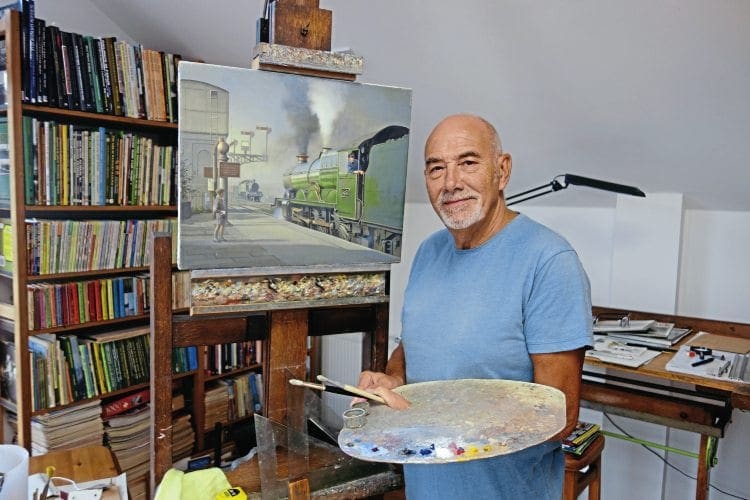For almost 40 years, artist Philip Hawkins has thrilled us with magnificent images of trains in all their glory. Now The Railway Magazine sketches the life story of one of the world’s greatest railway painters.
When it comes to art, one man’s meat is another’s poison… and that’s especially true in the world of trains, where a widespread passion for rivet-counting realism makes railfans the most severe of critics.

Pleasing these armchair pundits is no simple task. A remarkably high percentage are perfectionists and wherever two or more are gathered together, a debate on railway art can be guaranteed to produce a lively and often heated exchange.
Monthly Subscription: Enjoy more Railway Magazine reading each month with free delivery to you door, and access to over 100 years in the archive, all for just £5.35 per month.
Click here to subscribe & save
For many enthusiasts, the more esoteric aspects of painting, such as surrealism and post-impressionism, can safely be consigned to the realms of academia. Of far greater importance are such issues as the shade of the livery, the size of the tender logo and the shape of the driving wheels.
If just one point has been badly executed – no matter how trivial the matter might appear to a non-enthusiast – the rest of the picture might as well not have been painted.
To be fair, some railway artists are their own worst enemies, portraying dreadful errors of perspective, wheels that don’t appear to run on rails, smoke that looks like cotton wool, coaches that bulge like balloons and numberplates that seem to fill half the smokebox. Engines depicted by such painters almost invariably have leaking cylinders, too. Why? Because the clouds of steam conveniently hide all that horrible complicated motion!
Read more in the December issue of The RM




